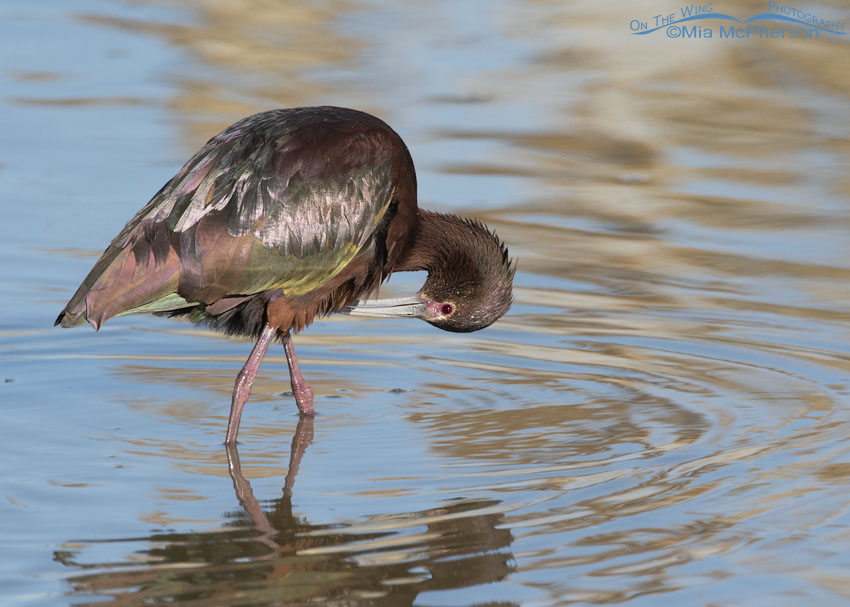 Adult White-faced Ibis preening its belly – Nikon D500, f7.1, 1/2000, ISO 640, Nikkor 500mm VR with 1.4x TC, natural light
Adult White-faced Ibis preening its belly – Nikon D500, f7.1, 1/2000, ISO 640, Nikkor 500mm VR with 1.4x TC, natural light
White-faced Ibis are abundant at Bear River Migratory Bird Refuge during their breeding season and they can be easily seen from the 12 mile, self-guided auto tour route feeding in the water impoundments or flying in loose flocks overhead. White-faced Ibis are long-legged, wading birds with long decurved bills and red eyes and we are fortunate to have the world’s largest breeding colony of them right here in northern Utah.
During their breeding season their plumage seems to glow with shades of pinks, greens, purples, blues and bronze with a metallic sheen in the right lighting conditions. I had those lighting conditions two days ago at the refuge.
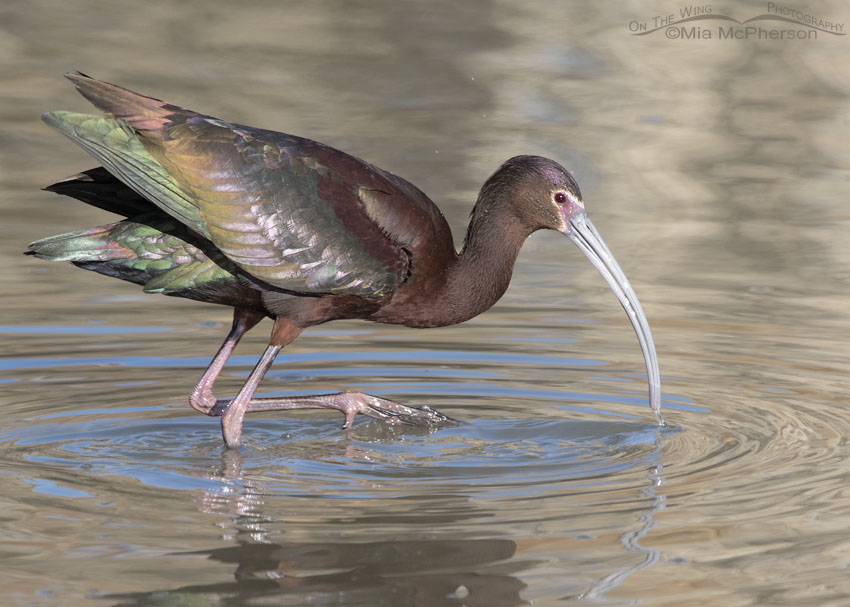 Adult White-faced Ibis in breeding plumage – Nikon D500, f7.1, 1/1250, ISO 640, Nikkor 500mm VR with 1.4x TC, natural light
Adult White-faced Ibis in breeding plumage – Nikon D500, f7.1, 1/1250, ISO 640, Nikkor 500mm VR with 1.4x TC, natural light
On the south end of the auto tour route there were several small flocks of White-faced Ibis foraging in what shallow water they could find. The water in that particular area has been drawn down again like it was last spring for maintenance, maintenance of what I am not quite sure.
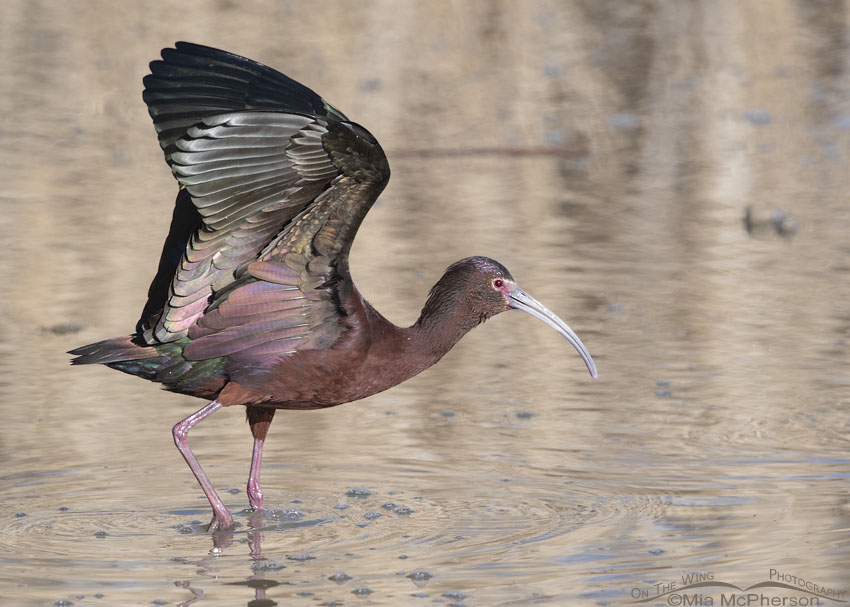 White-faced Ibis with its wings up – Nikon D500, f7.1, 1/1600, ISO 640, Nikkor 500mm VR with 1.4x TC, natural light
White-faced Ibis with its wings up – Nikon D500, f7.1, 1/1600, ISO 640, Nikkor 500mm VR with 1.4x TC, natural light
White-faced Ibis eat insects, crustaceans, frogs, snails, small fish, leeches, spiders and aquatic insect and their larvae that they find in the marshes at refuge.
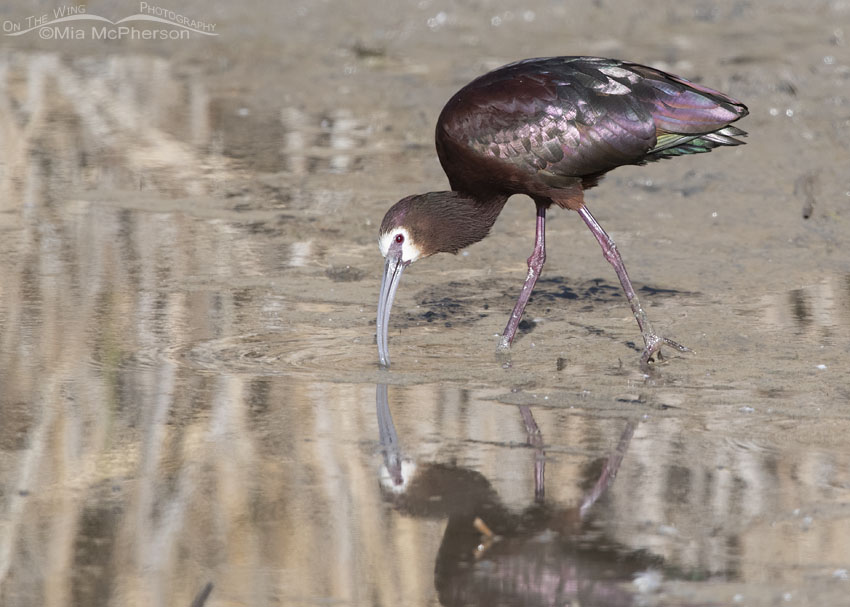 One really white faced White-faced Ibis – Nikon D500, f7.1, 1/2000, ISO 640, Nikkor 500mm VR with 1.4x TC, natural light
One really white faced White-faced Ibis – Nikon D500, f7.1, 1/2000, ISO 640, Nikkor 500mm VR with 1.4x TC, natural light
I think this White-faced Ibis has the whitest face I have ever seen on this species. It was unusual and stood out from the rest of the foraging ibis to my eyes, it never came as close as the rest of the flock did but I wish it had.
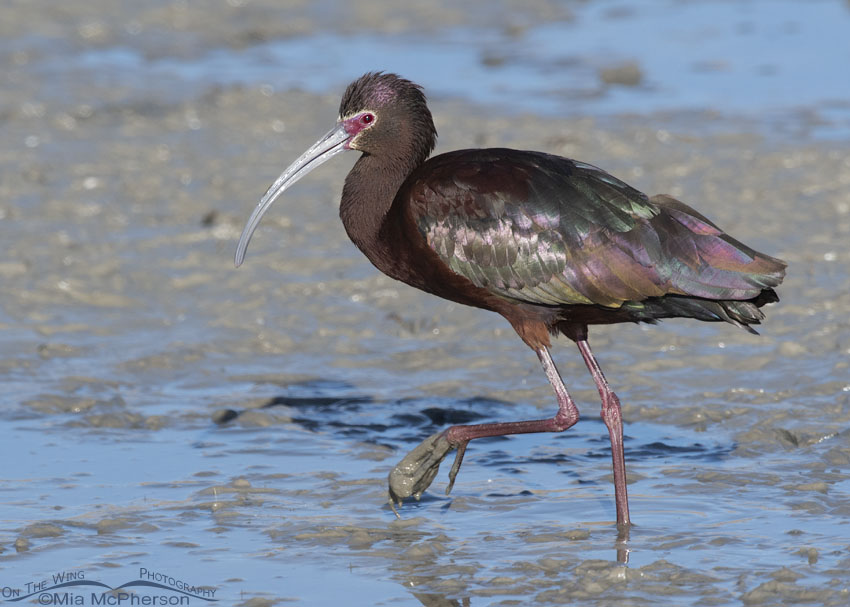 White-faced Ibis with very muddy feet – Nikon D500, f7.1, 1/1600, ISO 640, Nikkor 500mm VR with 1.4x TC, natural light
White-faced Ibis with very muddy feet – Nikon D500, f7.1, 1/1600, ISO 640, Nikkor 500mm VR with 1.4x TC, natural light
I had to chuckle when I saw this photo at home on my monitor because of the coating of mud this White-faced Ibis had on its feet. I think there is more mud there than feet.
I look forward to seeing more White-faced Ibis at the refuge throughout their time here in northern Utah.
Life is good.
Mia
Click here to see more of my White-faced Ibis photos plus facts and information about this species.


Great series of shots. I can practically “feel” the Ibis moving through the water. Thanks Mia.
Oh what a treat. Echoing Laura here.
Beautiful, I did not know we had the largest breeding colony. I also did not know we had Glossy Ibis until I saw one 2 weeks ago that just looked different than the rest and I looked it up.
WOW! What a knockout species! I love the iridescence and the mud and well, everything! Thank you so much for sharing!!
Wow! You really caught the beautiful iridescence of this bird…wonderful images!
Beautiful photos Mia.
What a beautiful bird & so well captured by you. Wow.